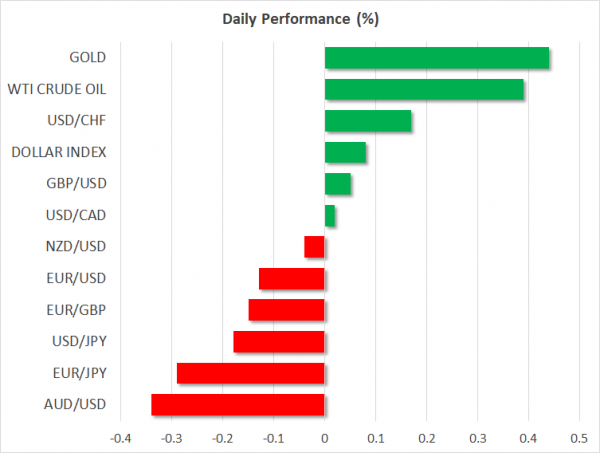- Euro area PMIs disappoint, raising bets for a dovish ECB tomorrow
- US dollar outperforms, without any major catalyst
- Euro/franc falls below 1.10 – will the SNB intervene soon?
Euro slips as disappointing PMIs fuel ECB bets
Preliminary PMI data out of France and Germany for June have just been released, and were disappointing overall. While the service sector prints were more or less in line with forecasts, the manufacturing figures fell substantially, with the French print touching the neutral 50 level and the German one sinking deeper into contractionary waters. The German surveys even highlighted the risk of a ‘mild technical recession’.
The continued malaise in manufacturing amplifies the prospect that the ECB will act with force in the coming months and deliver an extensive stimulus package that includes more QE, to keep this weakness from infecting the so-far resilient services sector. Who knows, if the German economy weakens enough, the nation’s government may even consider using part of its massive ‘war chest’ to provide some fiscal stimulus.
The euro fell on the news, and the near-term risks remain tilted to the downside. Draghi has a talent for sinking the euro on ECB policy meetings, and tomorrow’s gathering is unlikely to be an exception given the quality of these data and the elevated external risks.
‘King dollar’ makes a comeback
The US dollar was at the epicenter of attention once more on Tuesday, powering through all other major currencies to touch a two-month high against the euro, even without any clear fundamental catalyst behind the surge. News that American negotiators will head to Shanghai next week for trade talks may have augmented the dollar’s gains, by lifting US bond yields and stock markets – but did not trigger the move.
What’s striking is that the implied probability for an aggressive 50bp Fed rate cut in July barely moved, staying static near 20%. Such a move still seems excessive, as it makes little sense for the Fed to use so much of the rate ammunition it fought so hard to accumulate in recent years, without the economy even being in trouble. The point is that more easing is priced in than the Fed is likely to deliver next week, which means the dollar may have more room to run higher for now – especially if Friday’s GDP data are solid.
Euro/franc drops below 1.10 – is the SNB about to step in?
One of the themes that could grow into something much bigger soon, revolves around the Swiss franc and the extraordinary gains it has posted recently. Simmering trade tensions and fears of a global slowdown are clearly fueling demand for the safe-haven currency. More importantly though, major central banks have started to ease, narrowing Switzerland’s rate differentials with the rest of the world and by extension making the franc more attractive.
And yet, Switzerland’s infamous central bank has remained on the sidelines, intervening neither physically nor verbally in the FX market to weaken the franc, or at least slow down its appreciation. However, this is unlikely to continue. If the franc continues to gain, especially against the euro that may be weakened by ECB easing, the SNB will eventually have to step in. The real question is, what level in euro/franc policymakers will choose to ‘defend’. In this sense, any drop below the 1.07-1.08 area may be a headache for the Bank.














